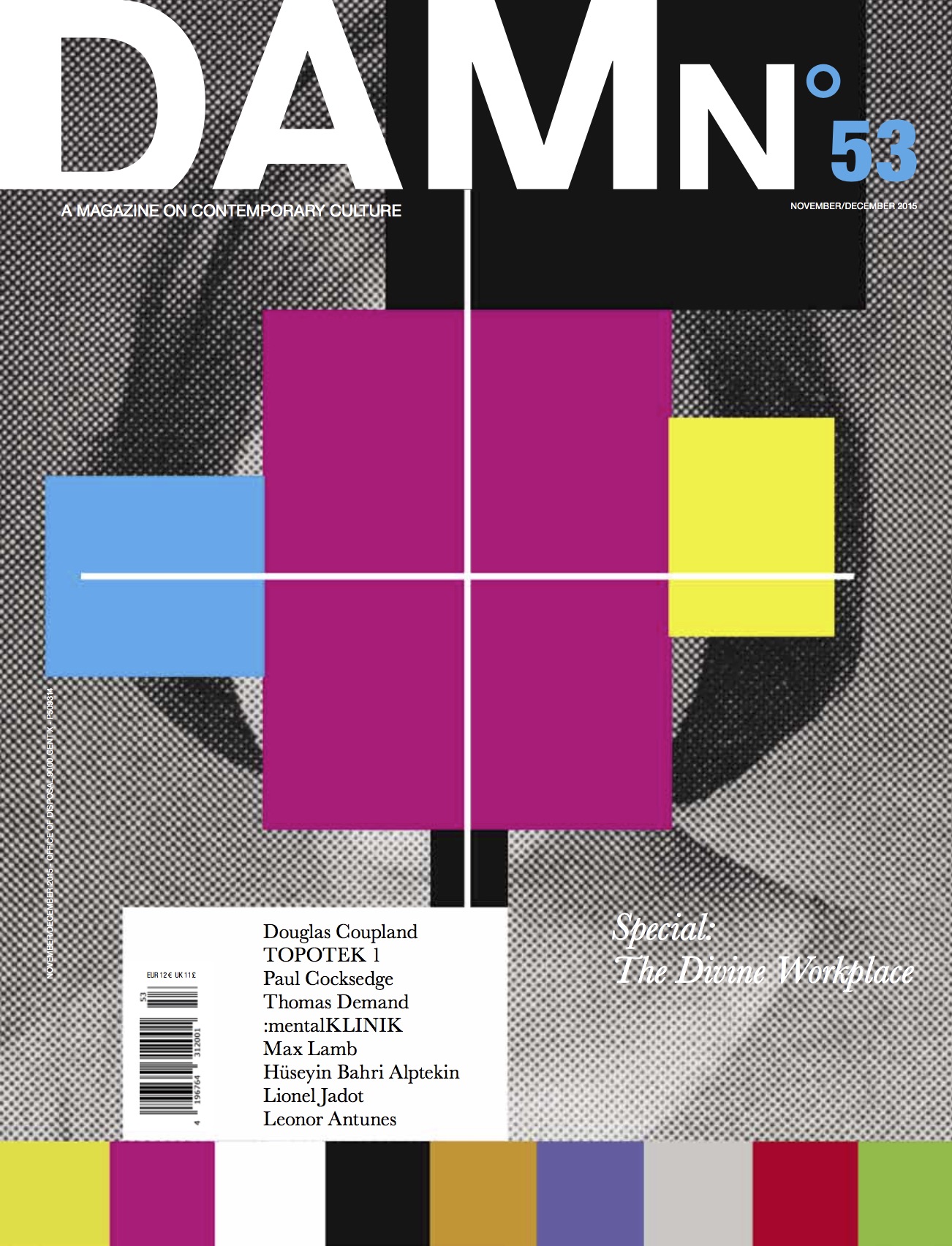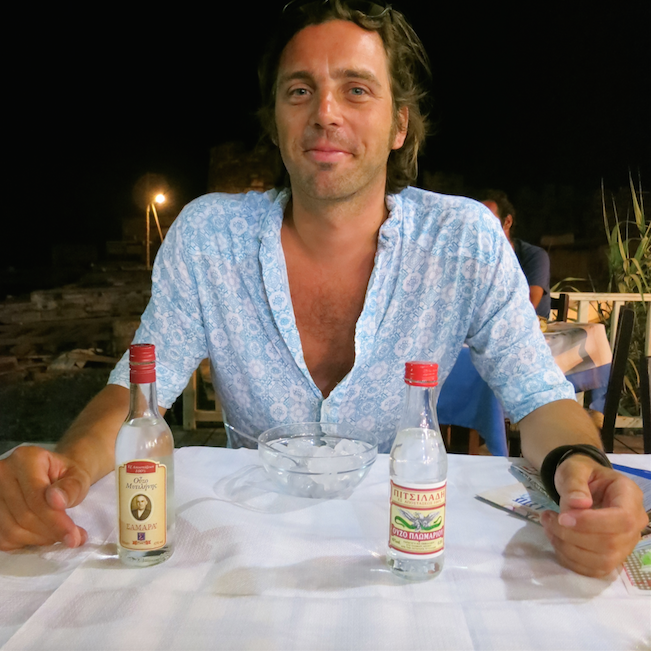Whether paying tribute to a forgotten architect or designer, or admiring the craftsmanship of a local tanner, the fusion of arts and crafts is crucial to the practice of this Berlin-based Portuguese artist. Only two weeks after Leonor Antunes’s show closed at the New Museum in New York, the exhibition travelled to KIOSK in Ghent, a space housed in a former anatomical theatre. DAMN° met with the artist just prior to the opening of her Belgium show.

Leonor Antunes: I immediately knew I wanted to have a lot of daylight and no artificial light in the main room. I often work with daylight. I also didn’t want the main room to be central in the show, the way it is normally is. That’s why I put most of the works in the corridors. We spent a lot of time removing the lights. There were a lot of fluorescent tubes to take out. I prefer to use my own lamps. I’ve started to make them myself because I don’t like the kinds of lamps used in exhibition spaces.
DAMN°: So the show evolves depending on the light and weather conditions?
LA: Yes, towards the evening it becomes quite dark. All the light then comes from the corridors, as they are the only spaces that are illuminated. There’s almost no light in the main room. When the building was originally built, there wasn’t any artificial light in the cupola – they installed that afterwards. In 2013, I had a show at the Serralves Museum in Porto, an old Art Deco villa. I spend two weeks revising the interior: I took out all of the fluorescent lights that were not there when the villa was built. I always try to bring the space back to its original state. It didn’t make sense to me to have that artificial light, as there was already so much daylight coming in through the windows.
DAMN°: Two weeks ago, you showed the same works in New York. Do they function differently in this setting?
LA: Apart from two pieces that I am not showing here in Ghent, they are indeed the same works. One of those is a floor piece that I made especially for the New Museum – it was for a space on the ground floor that is often used as a project room. It’s a bit of a hybrid room behind the bar, with a glass façade. I needed to isolate it and make it autonomous. The piece would not make sense here, as this venue is already autonomous in itself. The majority of my works are foldable and easy to transport. There’s always the idea of the object being passive and able to adjust to other spaces. In the New Museum, the exhibition was very much intended for the space. Which is why I made Plexiglas sculptures. I wanted to reinforce the idea of transparency, mirroring, and distortion. But I didn’t want the work to be in glass, as then it becomes too much of a precious object. I also like the idea of the material ageing, probably changing colour and turning yellow. But anyway, the works are autonomous. I wanted to make something completely different from the show in New York. I think I’ve managed to do so.
LA: Apart from two pieces that I am not showing here in Ghent, they are indeed the same works. One of those is a floor piece that I made especially for the New Museum – it was for a space on the ground floor that is often used as a project room. It’s a bit of a hybrid room behind the bar, with a glass façade. I needed to isolate it and make it autonomous. The piece would not make sense here, as this venue is already autonomous in itself. The majority of my works are foldable and easy to transport. There’s always the idea of the object being passive and able to adjust to other spaces. In the New Museum, the exhibition was very much intended for the space. Which is why I made Plexiglas sculptures. I wanted to reinforce the idea of transparency, mirroring, and distortion. But I didn’t want the work to be in glass, as then it becomes too much of a precious object. I also like the idea of the material ageing, probably changing colour and turning yellow. But anyway, the works are autonomous. I wanted to make something completely different from the show in New York. I think I’ve managed to do so.

LA: Yes, one of these is Anni Albers – she was married to the painter Josef Albers. She wanted to study architecture and design at the Bauhaus, but as a woman was only allowed to learn weaving. She became an incredible weaver, and the first to have a solo at MoMA. So of course I wanted to reference her show in my exhibition. My floor piece was related to her work – I enlarged a fabric pattern. The pieces I made from brass wire – that I am also showing here – are based on fabrics Anni Albers donated to MoMA. I enlarged the pattern and divided it into five parts.
 This article appeared in DAMN°53. Order your personal copy.
This article appeared in DAMN°53. Order your personal copy.
DAMN°: Your choice of materials is never neutral. What about the use of leather?
LA: These are life-size replicas of horse reins. I actually started making them for a project in Italy. I became fascinated by Carlo Mollino. As he was an architect, designer, artist, and photographer, people couldn’t categorise him and therefore didn’t take him seriously. He had built the headquarters of an Equestrian Association. It was one of his major works, but has since been destroyed. So I started making horse bridles. The idea was to have a kind of memory of something that no longer exists.
DAMN°: Your work often verges between art and design. And you design lamps that are functional. Are these artworks or design pieces?
LA: I just call them lamps. And I don’t call my objects art. I don’t want to make work that looks like art. I am fascinated by things that are reminiscent of something you’ve already seen but that are not necessarily artworks. I like the word ‘sculpture’ but not the word ‘installation’. It sounds very theatrical. Although I do use lamps, I don’t do so in a theatrical way. It is more about putting a familiar-looking object in a space.
LA: These are life-size replicas of horse reins. I actually started making them for a project in Italy. I became fascinated by Carlo Mollino. As he was an architect, designer, artist, and photographer, people couldn’t categorise him and therefore didn’t take him seriously. He had built the headquarters of an Equestrian Association. It was one of his major works, but has since been destroyed. So I started making horse bridles. The idea was to have a kind of memory of something that no longer exists.
DAMN°: Your work often verges between art and design. And you design lamps that are functional. Are these artworks or design pieces?
LA: I just call them lamps. And I don’t call my objects art. I don’t want to make work that looks like art. I am fascinated by things that are reminiscent of something you’ve already seen but that are not necessarily artworks. I like the word ‘sculpture’ but not the word ‘installation’. It sounds very theatrical. Although I do use lamps, I don’t do so in a theatrical way. It is more about putting a familiar-looking object in a space.

DAMN°: What about the notion of craft, which seems to be very important in your practice?
LA: The ways things are constructed is really important to me. I did not make this object myself, but I’m interested in working with craftspeople. I admire the work of a carpenter or a tanner who has a lot of experience and knowledge about their craft. They do something that must be learned over time. A year ago, I bought a rein and asked a guy I work with in Lisbon to replicate it because the person I bought it from in Mexico had died. He told me that a very old technique had been used, and he wasn’t sure if he could do it. But he gave it a try and did a very nice job.
DAMN°: Do you outsource these works or is the process behind their making more collaborative?
LA: It is collaborative in the sense that the craftspeople make it, but they don’t decide what they are going to make. A guy I worked with in Lisbon has a little shop where he restores saddles and bridles. He doesn’t have so much work, as this is a disappearing craft. For me, it is also a way of engaging the person in the process. However, the communication was not always easy. I started with things he already knew and then slowly introduced new elements.
DAMN°: Your work seems to have an affinity with minimal art, but instead of using factory-made materials, yours are handmade…
LA: It is not minimal at all! (laughs) Of course I am very interested in minimalist artists. I like the idea that they were making autonomous sculptures. They were often working within a context, as well. That is what interests me, that and the direct confrontation with the space.
DAMN°: Perception is crucial in your practice. But at the same time, your pieces have a very tactile quality. While standing here next to the leather bridles, one also notices their olfactory qualities. Is that also part of the work?
LA: Yes, and the smell of the hemp used for the rope is even stronger. It’s part of the work, as these are natural materials. It is also interesting to know that hemp is only produced in a few countries, like Germany and France. But not in the United States, as they think it’s illegal. Even though the material is not the same as marijuana! (laughs)































